Meaning, I did go back out to see how things looked after the rain, as I closed the previous post with. However, since these are displayed in reverse order, newest first, this post appears above that one and well away from that simple statement, ruining the continuity and requiring all this explanation. Plus there’s no sense of building drama or developing photo accomplishments, unless you’re reading these as soon as they post. Man, I can’t tell you how often simple formatting issues cramp my style…
All that aside, more froglets.
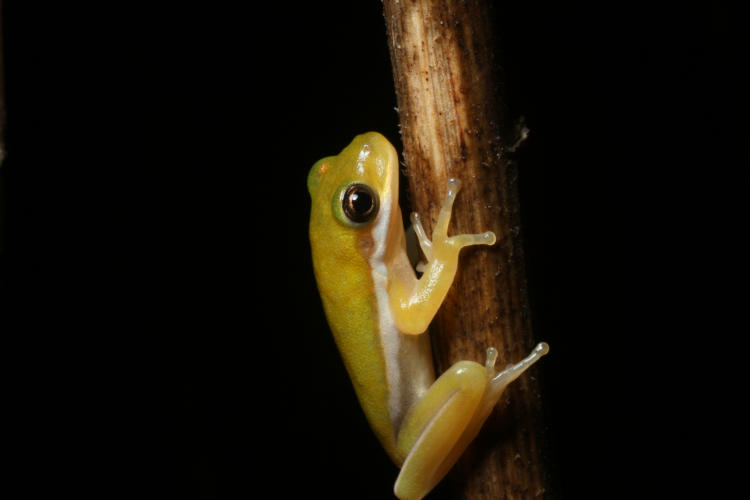
I shot two photos purposefully for scale comparison, keeping the magnification the same for each (easy enough to do with a manual focus lens – these are at closest focus for the Mamiya 80mm macro, without the extension tube.) Above is the juvenile, while below is an adult found less than half a meter off. Maybe someday I’ll be able to get both in the same frame.
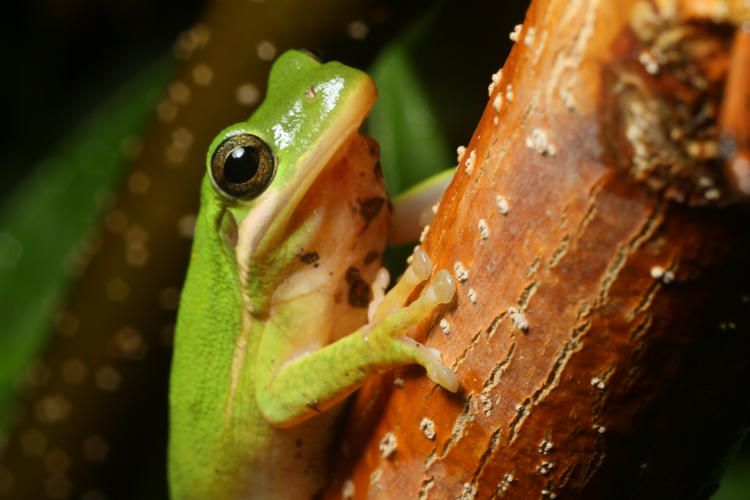
You should already know that adults don’t get more than 60mm in length, roughly the same size as the one seen here (even though that’s a different species.)
This time around, though, the frogs were being much more dynamic in their poses, and not leaping away half as often. Was this due to the rain, or was I being more inconspicuous, or something else entirely? Got me, but I’ll take advantage of it all the same.
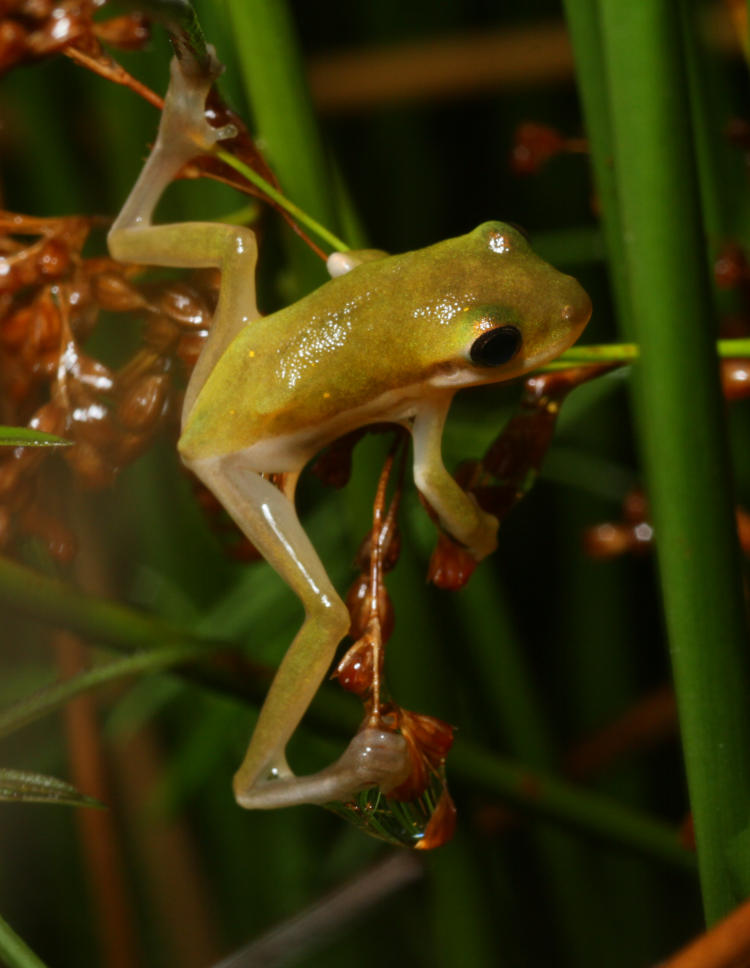
I’m pleased with this pose, partially because I know they won’t hold it for long and will typically leap away within a few seconds – which this one did. Before that happened, I captured this nice ‘action’ shot that also shows the abundant moisture and gives a hint of scale, since you can see the water forming ‘webs’ across the joints and a nice droplet at the bottom of that flowering sprig. Also note how transparent that uppermost foot is. Kewl.

A note about behavior. Treefrogs show no curiosity at all, and generally display two types of response to approach by a photographer (or at least, by me): Getting away, or hunkering down in place, legs tucked, and pretending they’re just a brilliant green, shiny, striped, bump on a log. So when this one actually sat up higher as if trying to see something better, right as I was lining up directly in front for the portrait angle, I was a little surprised. I’m not sure what that was about, but again, I’ll take it.
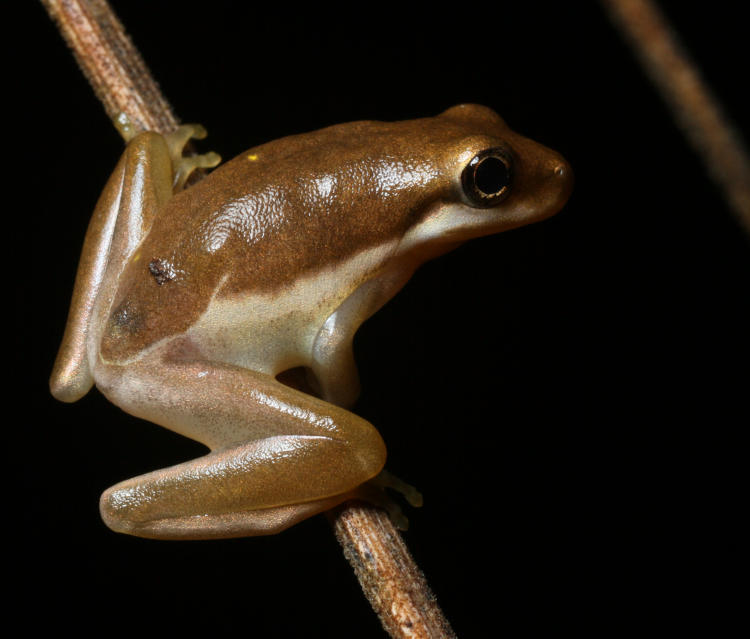
Just a lovely color variation. Is this what writers means when they refer to someone as a “bronze goddess?” It’s certainly what I’m going to imagine from now on.
Seriously, the color variations were all over the place, and I’m not sure how much control the frogs have over this; is it largely genetic, or do they alter it to suit the situation, and if so, how quickly does this take place? I’m fairly certain that, if it does occur, it’s much slower than the Carolina anoles, because I’ve watched that happen – it can take place in a few seconds. I’ve never been able to keep track of an individual frog, or even differentiate one, over a period of days to see if they change and when but, judging from the variants that I see in the same locations where I’ve been observing a particular one, it seems to be occurring. Annnddd now I have a new project.

The faintly belligerent expression, coupled with that one leg sweeping down in a smooth curve to open toes as if it just swatted at something, prompted me to call this one, “Damn Biplanes.” Hopefully that reference isn’t lost.
[Another note: I wanted an upward angle for one of my subjects this morning, and spotted this one in a decent position to exploit, but like most of them, it was quite low to the ground, which is still wet from the rain. I hadn’t thought to bring along a ground pad, essentially a tough sheet of vinyl that I use to prevent my ass from getting wet, so I was endeavoring to get the correct angle while sacrificing only my knee to the muddy terrain. I couldn’t quite get as low as I wanted, and it was an awkward and uncomfortable position, but the result is more than satisfactory.]
And finally, we revisit the molting mantis, because as I passed, it was in a nice position for the portrait, and I couldn’t resist.
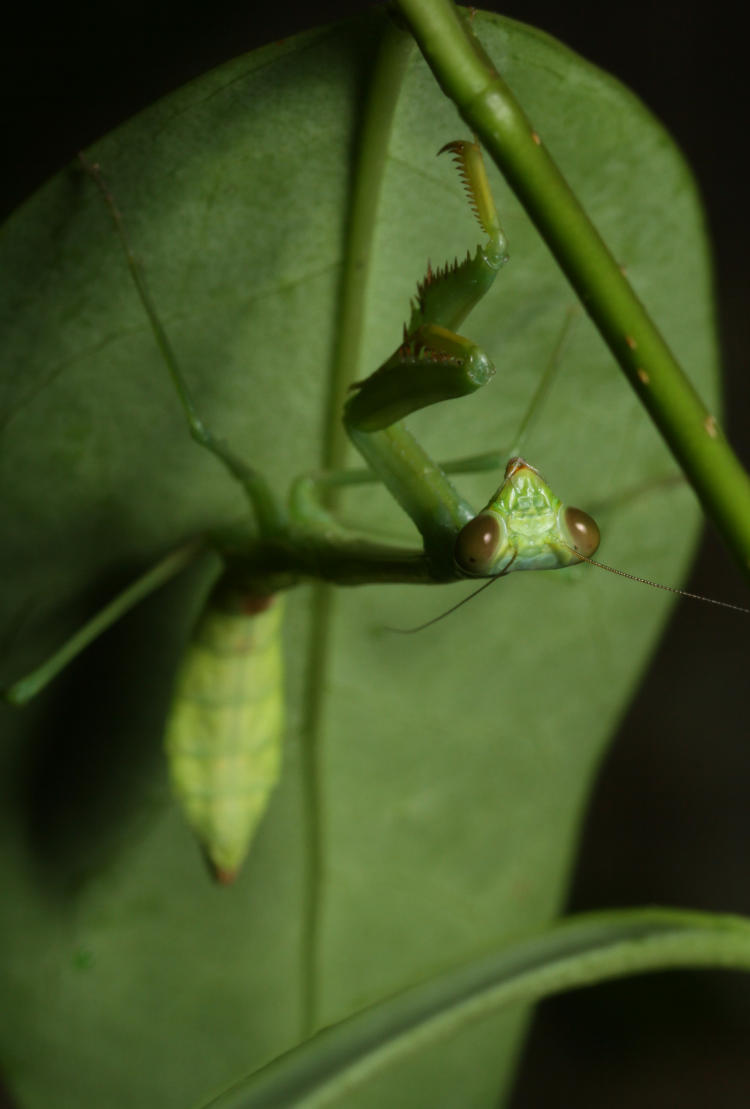
I’m pretty sure this is the exact same leaf that it molted on so, lazy day or so for the mantis. Hell, even I get around more than that, and I have a handy fridge of food. Then again, from the expanded size just in the past week, it appears to be finding enough food, so who am I to judge?




















































